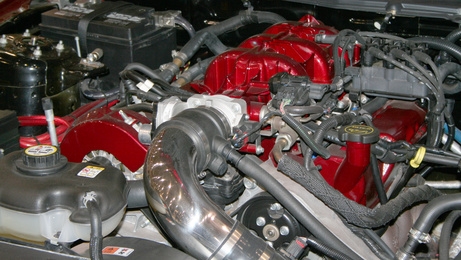
The radiator cap is an integral part of a vehicle's temperature control. It serves several purposes: seals the cooling system from debris and contaminants, maintains pressure and a constant boiling point and allows coolant to reach the radiator. A bad cap can cause a slew of problems -- learn to identify one and replace it to avoid the hassle of overheating.
Most vehicles have a warning light that signals low coolant levels. If you have recently topped up your coolant supply and the light persists, the coolant may be boiling prematurely and overflowing out of the radiator's expansion reservoir. This is a sign of a failed pressure seal on a radiator cap.
If you notice that the hoses connected to your vehicle's radiator are flattened and kinked, this is a sign of a failed return seal on a radiator cap. This seal allows for the flow of coolant back to the radiator once the engine has cooled, and a vacuum can be created if the flow is impeded.
An overheated engine in relatively cool weather is the most common sign of a bad radiator cap. The main seal, which creates a bond between the cap and the radiator's filler neck, may be eroded or incorrectly fitted, allowing for depressurization of the tank and a lowered boiling point.